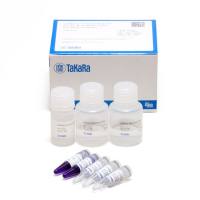Fluorescence Spectroscopy and Anisotropy in the Analysis of DNAProtein Interactions
互联网
624
Fluorescence spectroscopy can be used as a sensitive non-destructive technique for the characterisation of protein–DNA interactions. A comparison of the intrinsic emission spectra obtained for a protein–DNA complex and for free protein can be informative about the environment of tryptophan and tyrosine residues in the two states. Often there is quenching of the fluorescence intensity of an intrinsic emission spectrum and/or a shift in the wavelength maximum on protein binding to DNA. A step-by-step protocol describes the determination of a DNA-binding curve by measurement of the quenching of the intrinsic protein fluorescence.
Fluorescence anisotropy can also be used to obtain a DNA-binding curve if the molecular size of the protein–DNA complex is sufficiently different from the free fluorescing component. Typically an extrinsic fluorophore attached to one or both 5′ ends of single-stranded or duplex DNA is used, for this increases the sensitivity of measurement.
Fitting of the binding curves, assuming a model, can often yield the stoichiometry and association constant of the interaction. The approach is illustrated using the interaction of the DNA-binding domains (HMG boxes) of mouse Sox-5 and mammalian HMGB1 with short DNA duplexes.



![四[N-邻苯二甲酰-(S)-叔亮氨酸基]二铑双(乙酸乙酯)加合物;154090-43-4;Elemental analysis(Nitrogen) 3.30 to 4.50 %;V66234-25mg](https://img1.dxycdn.com/p/s14/2025/1029/004/8672158669127143891.jpg!wh200)




